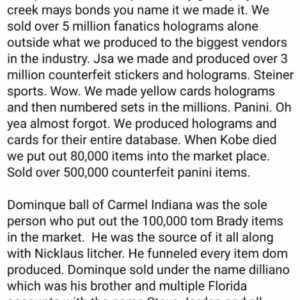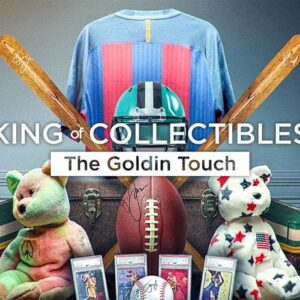The sports memorabilia world was abruptly thrust into chaos after a dramatic revelation and a chilling tragedy unfolded in Westfield, Indiana. The house of cards built on the mystique of allegedly rare sports treasures crumbled when Brett Lemieux, an autograph dealer well-regarded—or perhaps deeply feared—by peers, was discovered dead amidst a police raid. Authorities have indicated that Lemieux, aged 45, succumbed to a self-inflicted gunshot wound as officers executed a search warrant aimed at cracking open a colossal counterfeit memorabilia enterprise. The fallout from this scandalous discovery is bound to ripple through the market for years to come.
Lemieux, as it turns out, wasn’t merely dealing in fakes—he was the puppet master of a sprawling operation designed to deceive both the most seasoned collectors and the eager newcomers of the sports memorabilia hobby. A confession, purportedly penned by Lemieux himself, surfaced in the “Autographs 101” Facebook group, sending seismic shockwaves across autograph forums and beyond. In this now-infamous post, Lemieux admitted responsibility for orchestrating a scheme that flooded the market with more than four million phony sports items, raking in an eye-popping $350 million in sales. The staggering figures, while met with raised eyebrows by skeptics, underscore the immense scale at which Lemieux operated.
Under the guise of his business, Mister Mancave, Lemieux claimed to have the “largest framed jersey inventory on the web.” However, in a twist befitting a crime novel, no Columbus, Ohio storefront actually existed, despite public claims to the contrary. The allure of Lemieux’s offerings often came down to fetching, yet fraudulent, prices. A suspect Aaron Judge-signed baseball, for instance, was slyly listed with a counterfeit Fanatics hologram at a suspiciously reduced price of $399, versus the authentic $699 market value. These enticing bargains slyly dodged scrutiny, hidden under the cloak of expertly faked hologram stickers.
It’s no secret that these holographic stickers, associated with major authentication companies such as Panini and Fanatics, have always been viewed as a symbol of legitimacy. Lemieux admitted to his deep involvement in forging these very stickers, creating credible facsimiles so convincing they dodged expert and consumer tech alike. With tragicities like Kobe Bryant’s untimely death, there was a sinister exploitation of demand, as Lemieux boasted the release of 80,000 counterfeit Bryant items embellished with these deceptive stickers.
As the dust begins to settle, and the industry seeks to recover from such widespread deceit, major players are redoubling their efforts to regain the trust of collectors. Fanatics, soaring at the top echelons of the authentication hierarchy, unveiled that it revamped its hologram tech two years back, a preemptive measure against the likes of Lemieux’s fraudulent battalion. Moreover, it collaborates with law enforcement, leaning on the expertise of former FBI agents to insulate their collectible operations from further infiltrations.
The true depths of this con are still unraveling, painting a damning portrait of a man whose audacity knew no bounds. Names such as Dominique Ball and Nickolas Litscher surfaced decrying any connections, posing as collateral in the tapestry Lemieux weaved. Litscher, in particular, stands poised to take legal action in defense of his reputation, marred by mere association.
As collectors now eye their beloved possessions with newfound scrutiny, this development is a clarion call for heightened realism and prudence in the sports memorabilia market. The need for robust systems, resilient enough to thwart ever-evolving fraud tactics, becomes evident in this era where autopen technology challenges even the sharpest eyes for authenticity. The saga is a stark reminder: vigilance is no longer optional; it is necessary.
Indeed, the wake of this scandal serves as a jarring, cautionary tale—a chapter in which the authenticity of memories manifested in memorabilia is not just questioned, but dissected. As the dust swirls around this shocking discovery, collectors and dealers alike face the tumultuous task of salvaging a market teeming with artifacts of dubious origin. The story of Brett Lemieux’s counterfeit empire might well re-script the futures of mementos past, redefining the very notion of treasured authenticity.





